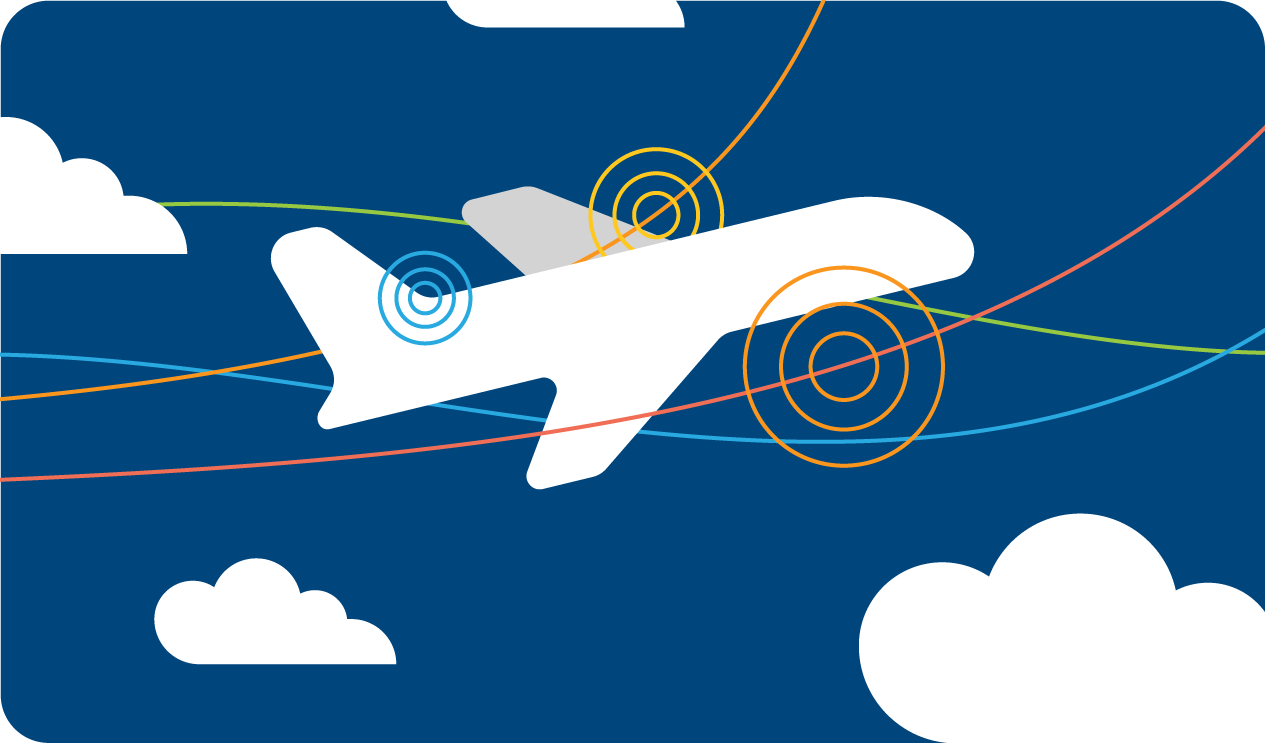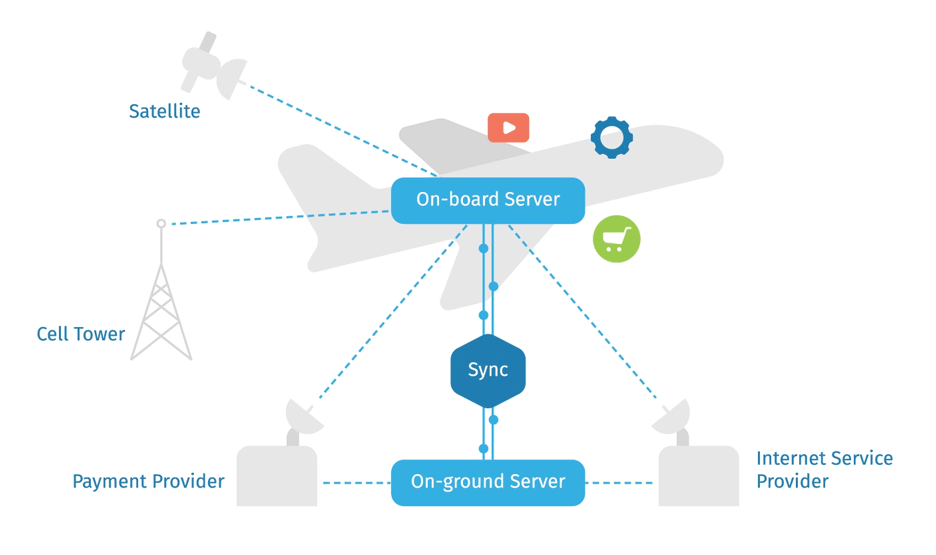

Enabling On-Board Connectivity
Elevating Experiences Through Connected Vessels
Internet has become so vital to our daily lives that it is now widely considered a human right. Although we have the means to stay connected on the ground even at the remotest of the regions, the notion of having internet 30,000 feet in the air is still mind-blowing.
Streaming your favorite show or catching up on the latest influencer post seems like a far-fetched idea when you are traveling on-board an aircraft at 900km/h or a high-speed train at 300km/h. But disregarding the limited nature and quality, passengers have already been able to access chats, receive notifications, weather updates, and much more for a few years.
As modern transport vessels (planes, trains, buses, ships) now produce hundreds of gigabytes of data during their journey, effective connectivity and systems to manage, offload, and synchronize data have become a necessity rather than a luxury. In recent years, the pursuit of efficient transport operations and on-board IoT has pushed the need for better connectivity amongst the transportation industry worldwide. Recent developments in on-board connectivity have brought some relief, allowing many of these data exchanges to be done in real-time (ACARS or Aircraft Communication, Addressing, and Reporting System over IP), but a lot is yet to be accomplished in the field.
How to manage multiple connectivity pipes and providers? How to provision and distribute the connectivity on-board? How to standardize inflight connectivity, data synchronization, and integrations with on-board IoT systems? - These are some of the questions that still need to be answered.
Making It All Happen
Like traditional internet connectivity at homes and offices, the internet on-board a transport vessel needs some hardware to send, receive, and distribute data - akin to a modem and router. It can be data from on-board sensors, infotainment or entertainment content, software packages, or logs. The on-board connectivity hardware allows the on-board servers to sync with the on-ground servers via multiple pipes like 3G, 4G, 5G (soon) mobile networks, or satellite networks. Depending on the type of ISP, the availability of the pipes, or the vessel’s geo-location, the on-board server switches between the communication pipes.
The connectivity on-board can be provided to passengers via Wi-fi or via IFEC systems (either wireless or seatback). In both cases, captive or connectivity portals play a significant role in provisioning the internet access to users.
A captive portal is a web page that new users are obliged to view for usage terms, purchase of internet packages, or inputting verification data before they can get broader access to the network resources.

These portals are prepared on-ground and utilize APIs from ISPs and payment providers for the integration of both. The pre-packaged portals are then deployed on-board while the vessel is on-ground or at the gate.

Building Robust Connectivity
One major challenge in providing on-board connectivity is transferring and deploying the portals on-board and integrating with the hardware. Luckily, with the UMS (User Modifiable Software) concept, on-board captive portals can be deployed on the vessel servers as containerized packages with little hassle. The isolation and containerization enable providers to not only control resource usage, data access, and integrations but also allows them to deploy the portals in the form of packages on a wide array of hardware. Capabilities of these portals can further be extended by integrating multiple ISPs and providers to build robust and cost-effective connectivity.
The second hurdle is handling the load. The content of these connectivity portals can either be synced once before departure, dynamically (using on-board internet) or a hybrid approach can be followed, i.e. pre-positioning content. By pre-positioning some of the content like popular movies or TV shows or infotainment content (sparingly updated) like news, weather, moving maps, providers the load over the on-board wi-fi and internet can be significantly reduced.
Axinom has worked with many industry-leading connectivity providers and companies in aerospace, railways, and buses to bring internet on-board vessels for passenger, crew, and operations. Our experience in the field of IFEC has enabled us to build robust digital solutions for captive portals, managing communication pipes, and securely uploading and offloading data.








